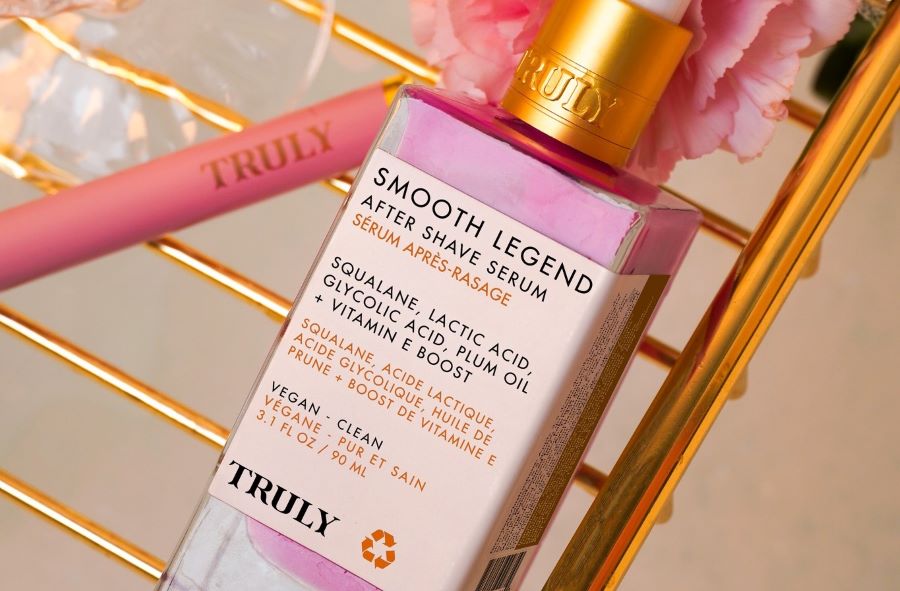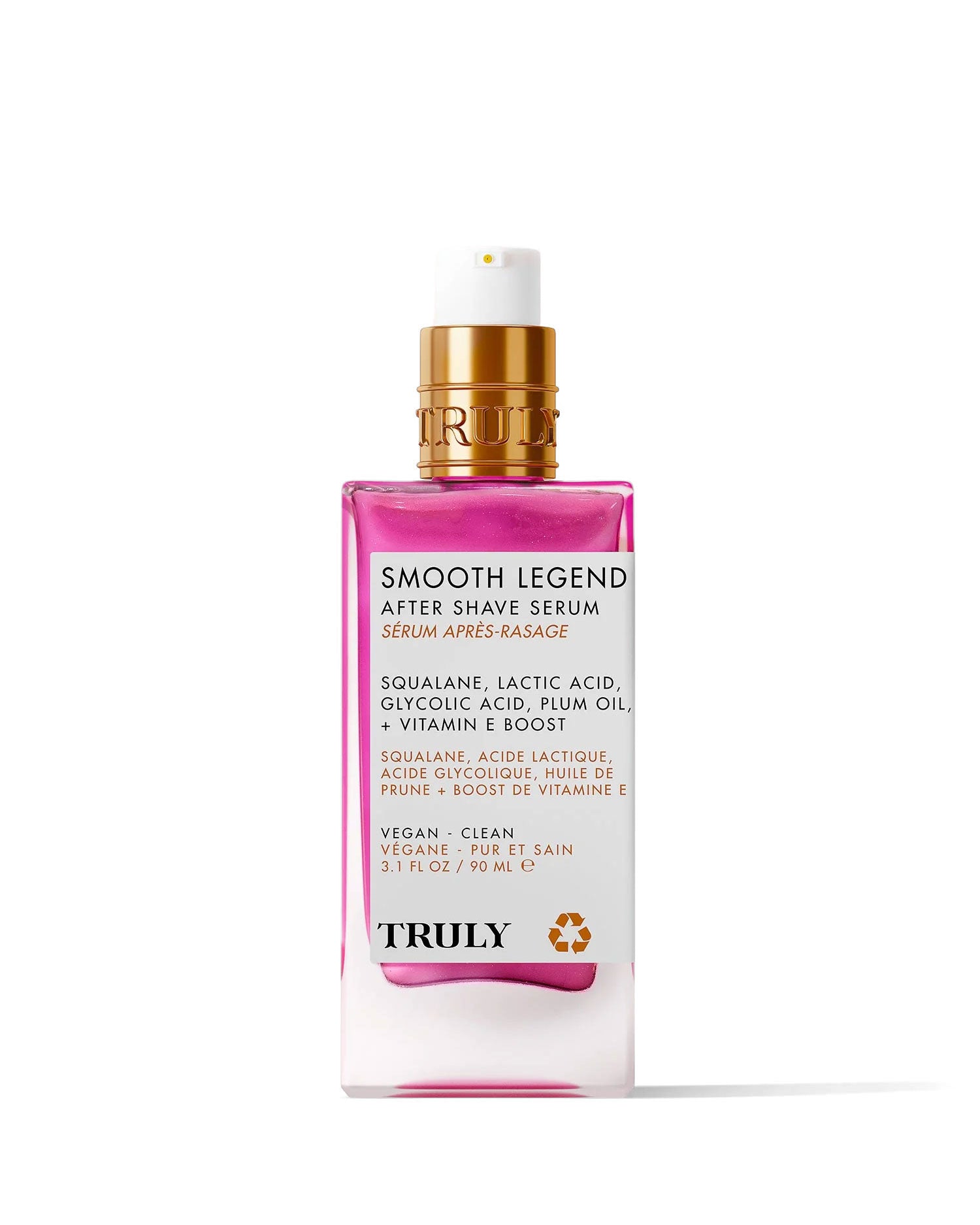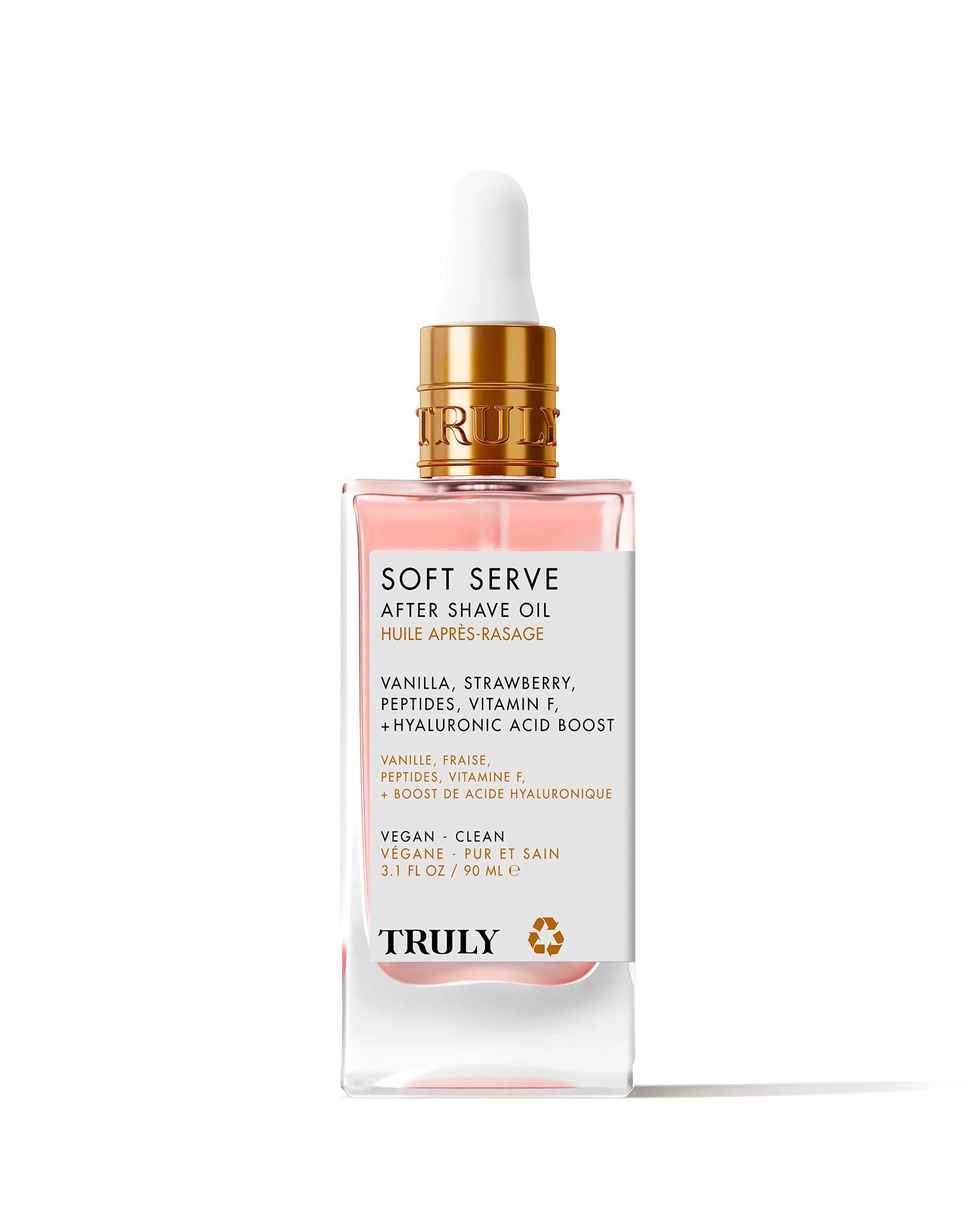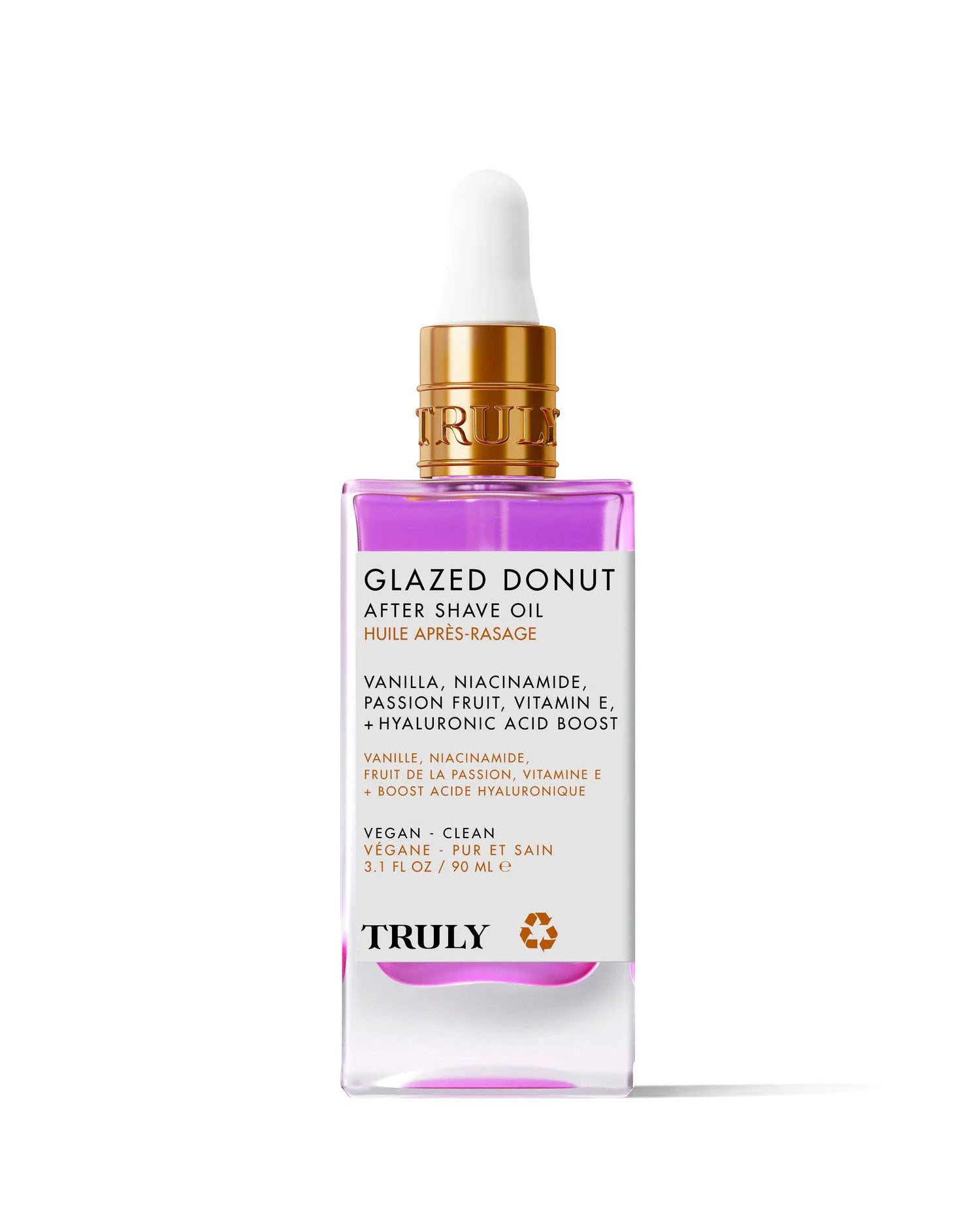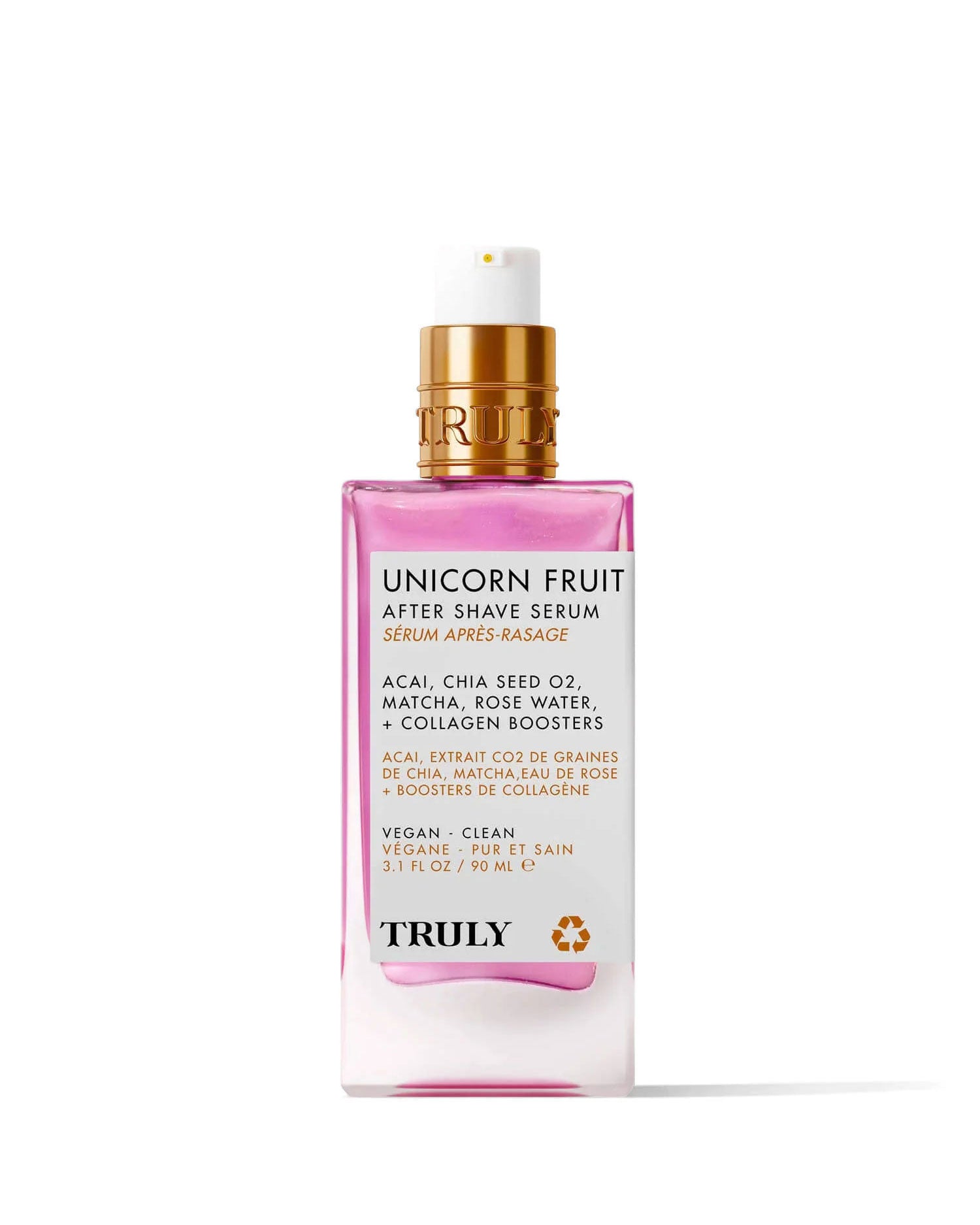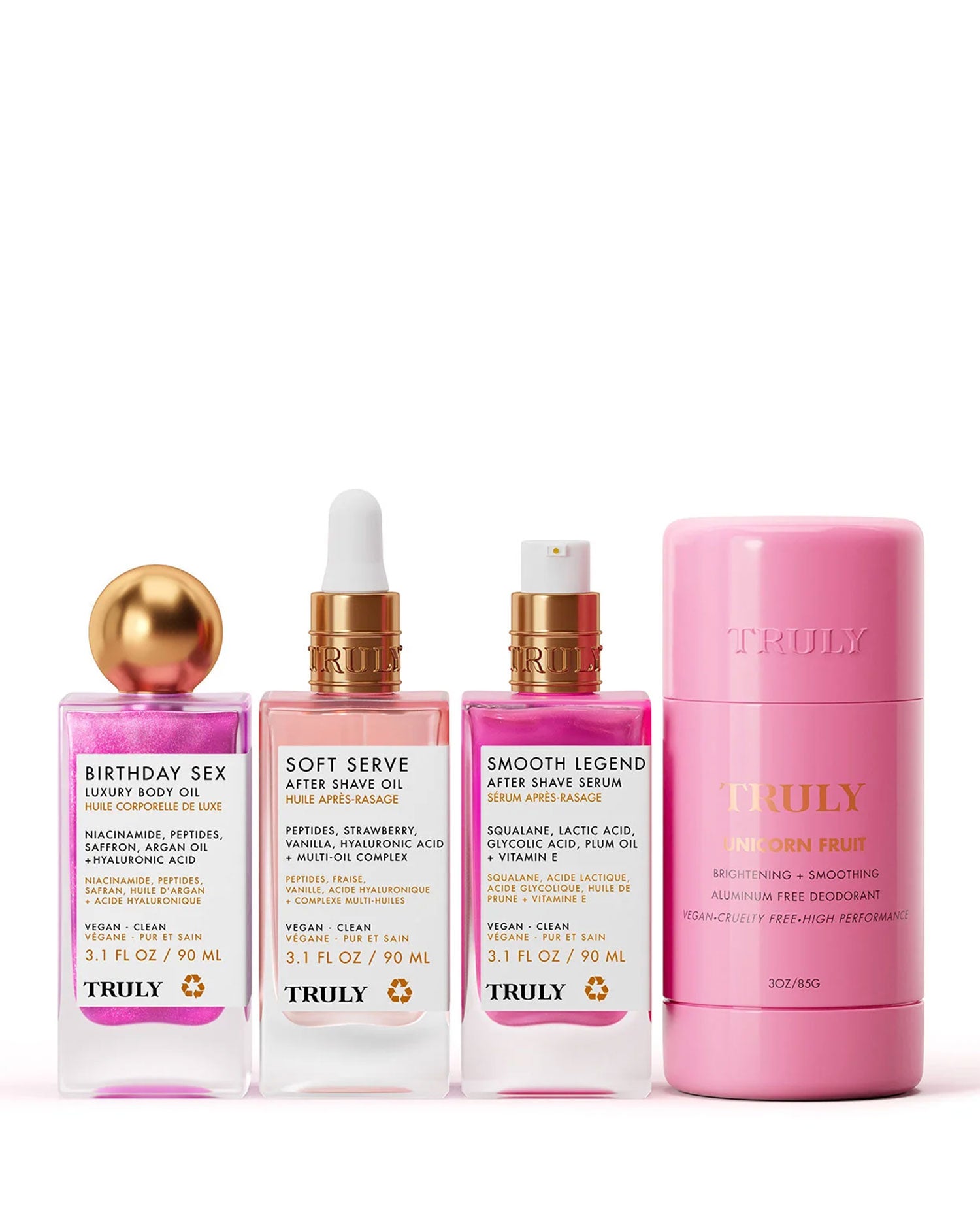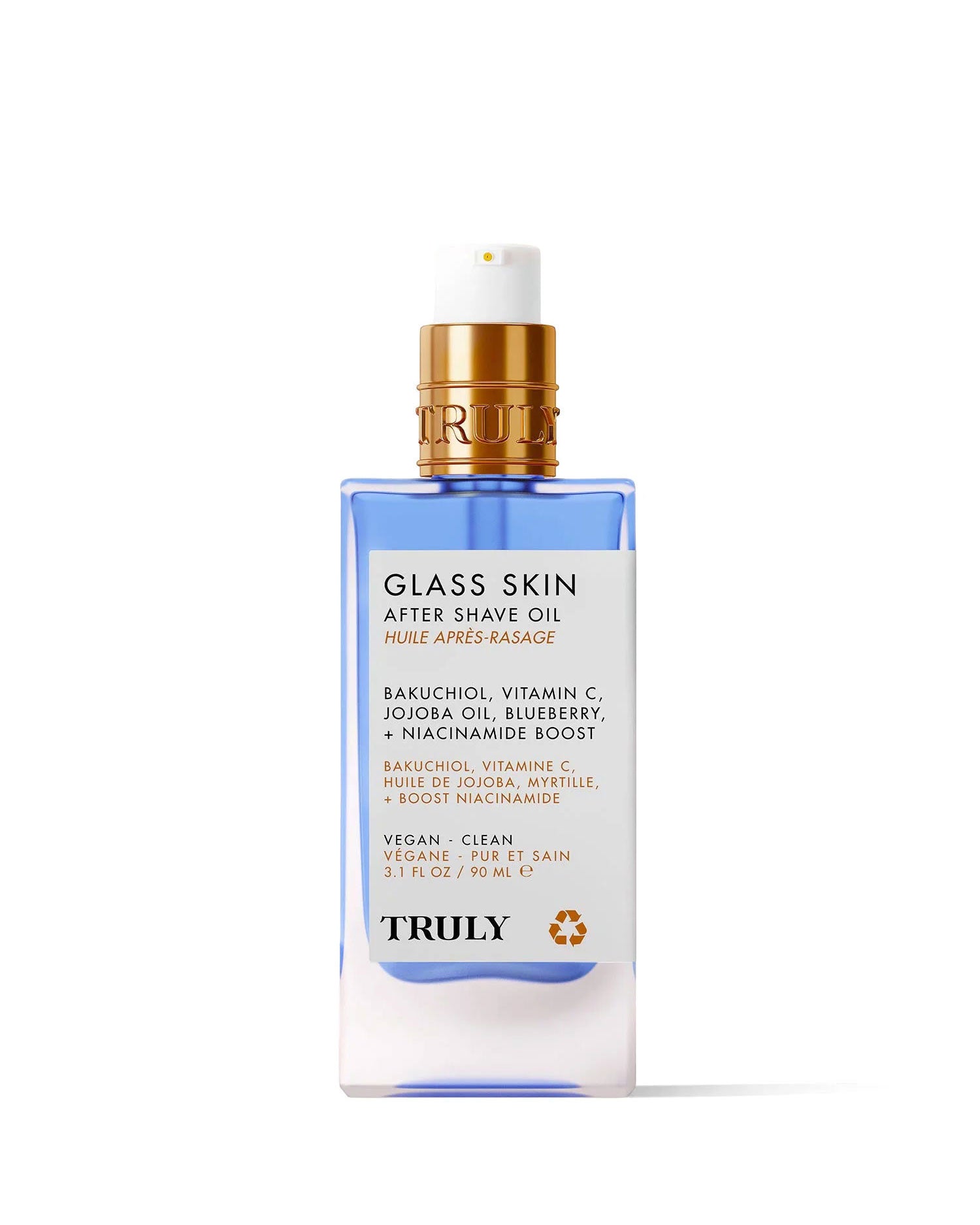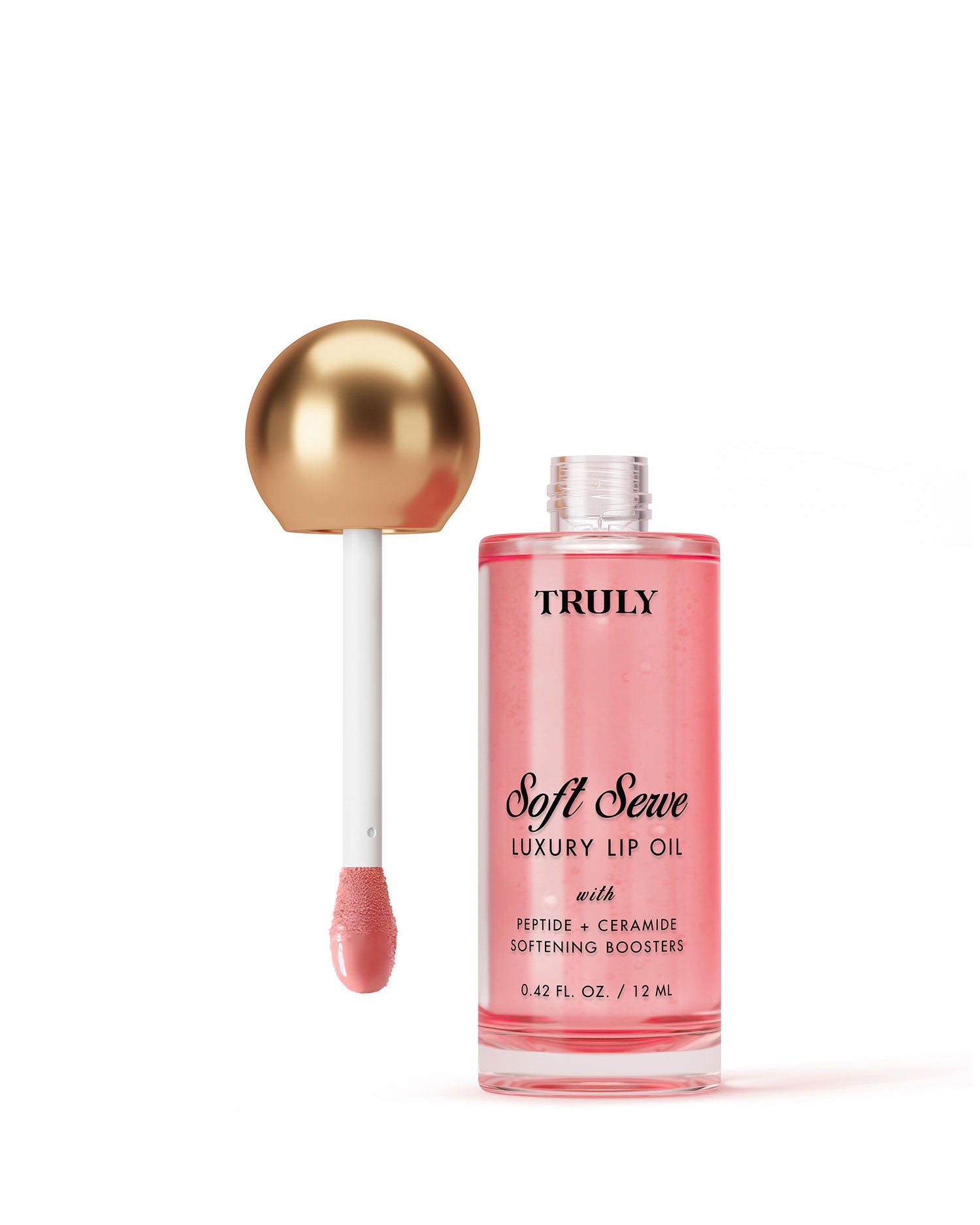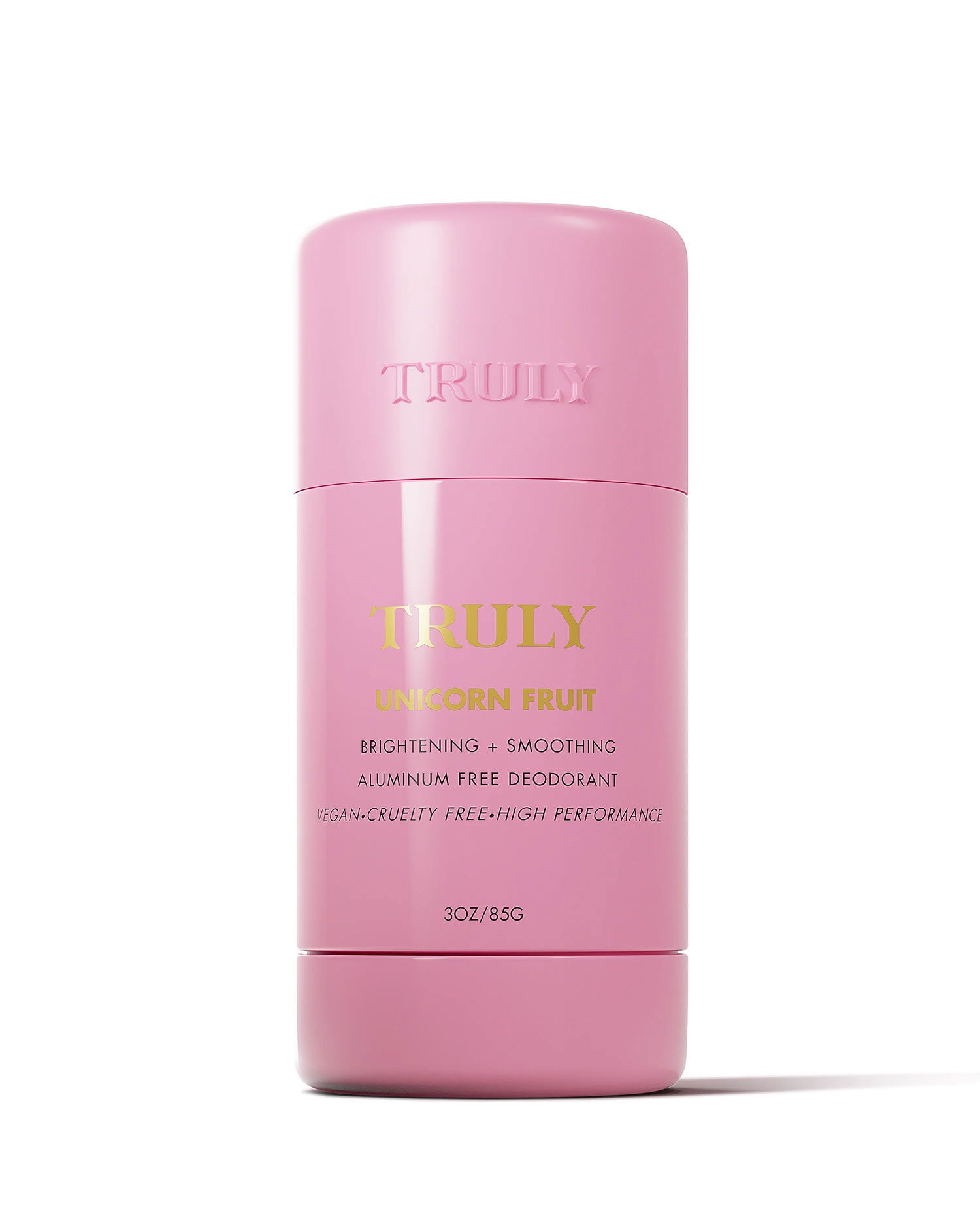What is Glycolic Acid? Your Ultimate Guide
April 05, 2024
By: Truly Beauty
Glycolic acid is a superhero ingredient that can transform your skin. But what is glycolic acid? And what does glycolic acid do to skin? Using glycolic acid for skin has a number of benefits that all skin types can enjoy. This exfoliating acid tackles everything from fine lines to hyperpigmentation and acne.
Here, we take a closer look at what it is, how it works, and the glycolic acid benefits for skin. We’ll also show you how to use it in your skincare routine, and the best glycolic acid skincare products for getting smooth, radiant skin all over.
What is Glycolic Acid?
Glycolic acid is an alpha hydroxy acid (AHA) derived from sugarcane that’s main function is to exfoliate the skin. It has the smallest molecular weight among all acids, making it highly effective at penetrating deep into the skin for maximum benefits.
As a chemical exfoliant, glycolic acid is commonly used in treatments designed for dry skin, oily skin, and acne-prone skin. You will find it in all kinds of skincare products including cleansers, toners, and serums. It is also the main ingredient in chemical peels to help resurface and even out skin tone and texture.
Shop Glycolic Acid Serum for Smooth, Clear Skin
How Glycolic Acid Works
Alpha hydroxy acids like glycolic acid dissolve the bonds that hold cells together on the skin’s surface to remove dead skin cells, revealing smoother, brighter skin underneath. It works differently to a physical exfoliant like a scrub. Instead of manually buffing away dead cells, glycolic acid (as with all AHAs), speeds up cell turnover by breaking down the substances that bind dead cells together.
AHAs like lactic acid and glycolic acid are water-soluble which makes them the most effective in the top layer of the skin, where they can target surface-level concerns like fine lines, blackheads, and discoloration. AHAs are different to beta hydroxy acids (BHAs) such as salicylic acid, which are oil-soluble and able to penetrate deeper into the pores to address acne.
In addition to exfoliating the skin, glycolic acid increases collagen production, according to studies. Collagen is the protein responsible for keeping skin firm and plump. As we get older, the skin makes less collagen which can lead to visible signs of aging such as fine lines and sagging. Using glycolic acid regularly can help prevent the breakdown of collagen.
Benefits of Glycolic Acid for Skin
What can glycolic acid do for skin? Glycolic acid can address multiple skin concerns including signs of aging and discoloration. Here are some of the best glycolic acid benefits for skin.
Fades Hyperpigmentation
Glycolic acid is a great skincare ingredient for targeting hyperpigmentation like dark spots and age spots. Hyperpigmentation occurs when the surface of the skin becomes darker. Glycolic acid works by removing darker skin cells from the surface to reveal fresh, even skin.
It also helps fade the marks left behind by breakouts—also known as post-inflammatory hyperpigmentation. With every layer of skin it removes, scars and marks appear less visible. What’s more, glycolic acid can help fade sun-induced pigmentation, or brown spots.
Reduces Fine Lines and Wrinkles
Glycolic acid is a powerful anti-aging ingredient. It reduces the appearance of fine lines and wrinkles by accelerating skin cell renewal and boosting collagen production. By speeding up cell renewal, glycolic acid smooths the skin’s appearance, softening the look of fine lines and wrinkles. By increasing collagen production, glycolic acid plumps out wrinkles while firming and tightening the skin to reverse sagging.
Studies show that using a topical glycolic acid cream can actually thicken the skin to plump out lines. Patients that used a 15% glycolic acid cream for six months experienced a 27% increase in epidermal thickness.
When looking for glycolic acid anti-aging products, look for it in serums and moisturizers. Serums are especially good as they contain a high concentration of the active ingredient, meaning it maximizes the anti aging effects.
Combats Acne
Glycolic acid removes dead skin cells that block pores. Since clogged pores are a main contributor of breakouts, glycolic acid can help prevent pores from becoming congested and ultimately prevent acne breakouts. It’s especially good at warding off blackheads, whiteheads, and inflamed pimples.
Research shows that chemical exfoliation is a powerful method for addressing acne by clearing the buildup of pore-clogging dead cells, excess oil, and impurities.
While salicylic acid is one of the best ingredients for fighting acne as it penetrates deeper into the pores, glycolic acid works at a surface level to clean the pores and prevent blemishes. Plus, it can simultaneously target post-inflammatory hyperpigmentation—the marks left behind from acne. Dermatologists say it may even lessen the appearance of acne scars thanks to its resurfacing and collagen boosting effects.
Hydrates Skin
Interestingly, glycolic acid can also help to hydrate skin. As a humectant, it works to attract moisture, leaving the skin smooth, soft, and hydrated. Additionally, glycolic acid maintains your skin’s lipid levels, which also contributes to hydrated skin.
Lipids are healthy fatty acids that make up your skin barrier while sealing in hydration and keeping irritants out. They’re essential for healthy, hydrated skin. So with glycolic acid, you get the benefits of exfoliation without drying out your skin.
Combats Keratosis Pilaris
Keratosis pilaris (KP) is a skin condition that occurs when the hair follicles become blocked with a build up of keratin, a substance naturally found in the skin, nails, and hair. One of the best ways to manage KP is with a chemical exfoliant such as glycolic acid. Glycolic acid helps by removing the buildup and clearing the blockage to help soften bumps and alleviate dry skin.
Studies show that glycolic acid may be an effective treatment for managing keratosis pilaris thanks to its ability to clear plugs in the skin—and keep them clear by speeding up cellular turnover.
Brightens Skin
As an exfoliant, glycolic acid sheds the accumulation of dead skin cells on the surface of the skin. Without that layer of dead cells, light can better reflect the skin, giving your skin a brightening boost. Best of all, you can expect to enjoy a natural glow from the very first use.
Underneath that layer of dead cells, fresh, smooth cells are ready to be revealed. By sloughing them away with a glycolic acid wash or toner, you can see a subtle glow straight after using it—even more so if you follow up with moisturizer.
Improves Penetration of Ingredients
While it’s not a direct skin benefit, glycolic acid allows deeper penetration of skincare ingredients, optimizing their effects. When your skincare products penetrate deeper, they work harder and ultimately give you faster results. By accelerating skin cell renewal, glycolic acid improves the penetration of active ingredients for enhanced results.
This is why dermatologists advise using glycolic acid as one of the first steps in your skincare routine. Whether it’s a glycolic acid face wash or toner, using it first allows the ingredients in your serums and creams to absorb better and work better.
Best Glycolic Acid Serum
How to Use Glycolic Acid
1: Build Up Your Skin’s Tolerance
If you have sensitive skin, using glycolic acid too much or too often can cause skin irritation. Avoid this by increasing your skin’s tolerance to this active ingredient. Start by using a glycolic acid product just three times per week for the first week or two. If your skin isn’t red, dry, or irritated, try using it four times per week for a couple of weeks. When you feel your skin has fully adjusted to glycolic acid, you can start using it daily.
2: Make it the First Step
Whether you’re using a glycolic acid toner or cleanser, make sure glycolic acid gets first place in your skincare routine. Because glycolic acid helps ingredients penetrate deeper, applying it first ensures you maximize the effects of the following products.
That being said, you’re better off applying glycolic acid in the evening as the first step of your routine because it can make skin more sensitive to UV rays if applied in the morning. Of course, you should always be wearing sunscreen anyway. But if you plan on using a glycolic acid product in the am, be sure to slather on the SPF before leaving the house.
3: Couple it With a Moisturizer
To minimize irritating effects of glycolic acid, apply a moisturizer after using. If you’re using a glycolic acid serum, apply it to cleansed skin before moisturizing with a lightweight cream. Look for a moisturizer formulated with hydrating, soothing emollients and humectants like hyaluronic acid, aloe, and shea butter.
You can use the same trick for glycolic acid body products. Just apply the body lotion right after. Moisturizing after exfoliation is always a good idea as it helps support the skin barrier to prevent dryness and irritation.
4: Avoid Mixing it With Retinol
Retinol and glycolic acid are both highly potent ingredients that should not be used at the same time. You can use them both in the same skincare routine, just not together or mixed. This super strong combo can cause redness, flaking, and possibly even burning—especially if you already have sensitive skin.
Fortunately, glycolic acid works nicely with most ingredients, especially niacinamide, hyaluronic acid, and other hydrating ingredients like shea butter, and coconut oil. However, you may also want to avoid pairing it with vitamin C as this combo may also trigger irritation.
Side Effects of Glycolic Acid
Most people generally don’t experience side effects from using glycolic acid. However, those with dry or sensitive skin should stick to low percentage cleansers and serums to avoid flare ups. The worst glycolic acid side effects you can experience is due to using higher percentage glycolic acid products. Always stick to low percentage formulations. You can always go higher once your skin gets used to it.
If side effects from glycolic acid do occur, these most commonly include redness, burning, and flaking. If you experience any of these effects, reduce the frequency of use or stop using completely depending on the severity of the irritation.
People with darker skin should avoid overusing glycolic acid as it can lead to hyperpigmentation. This is because darker skin tones have a higher percentage of melanin in their skin and even minor irritations can trigger an inflammatory response, which can lead to discoloration.
You can always perform a patch test before using glycolic acid if you want to be on the safe side. But usually, side effects from applying glycolic acid are rare. You’re more likely to experience irritation from an in-office glycolic acid peel, as these contain a very high concentration of the active ingredient.
How Long Does it Take to See Results From Glycolic Acid?
Glycolic acid doesn’t mess around. In fact, many people notice brightening effects from the very first use. For most skin concerns, like acne and hyperpigmentation, it takes about a month to see an improvement. Within two months, you should see a significant improvement in the appearance of your skin.
As with all skincare ingredients, results vary from one person to another. Some may experience improvements within 4-5 weeks. For others, it could take several weeks to see a noticeable difference.
Is it OK to Use Glycolic Acid Everyday?
You can use glycolic acid products every day as long as they’re less than 10%. If you have sensitive skin, start by using glycolic acid 2-3 times per week. If your skin doesn’t react negatively, you can bump it up to 4-5 times per week, or even every day. Most importantly, always monitor how your skin behaves in response to applying glycolic acid skin care.
If your skin can tolerate daily use and you’re seeing positive results, continue with it. If you’re experiencing redness, dryness, or peeling, you’ll need to limit use or stop using it completely.
Glycolic Acid and Scalp Health
Glycolic acid isn’t just great for the skin. It can benefit your hair, too. Just like glycolic acid exfoliates off dead cells on the face, it can also remove dead skin cells on the scalp. In doing so, it removes excess sebum and product buildup, which can help promote stronger, healthier strands and encourage hair growth.
It’s especially good for those experiencing dandruff. Glycolic acid has exfoliating and antimicrobial effects which can help fend off a flaky scalp. For optimal results, the experts recommend exfoliating your scalp with glycolic acid once or twice a week, but no more than that.
In this article
-
What is Glycolic Acid? Your Ultimate Guide
-
What is Glycolic Acid?
-
Shop Glycolic Acid Serum for Smooth, Clear Skin
-
How Glycolic Acid Works
-
Benefits of Glycolic Acid for Skin
-
Best Glycolic Acid Serum
-
How to Use Glycolic Acid
-
Side Effects of Glycolic Acid
-
How Long Does it Take to See Results From Glycolic Acid?
-
Is it OK to Use Glycolic Acid Everyday?
-
Glycolic Acid and Scalp Health






